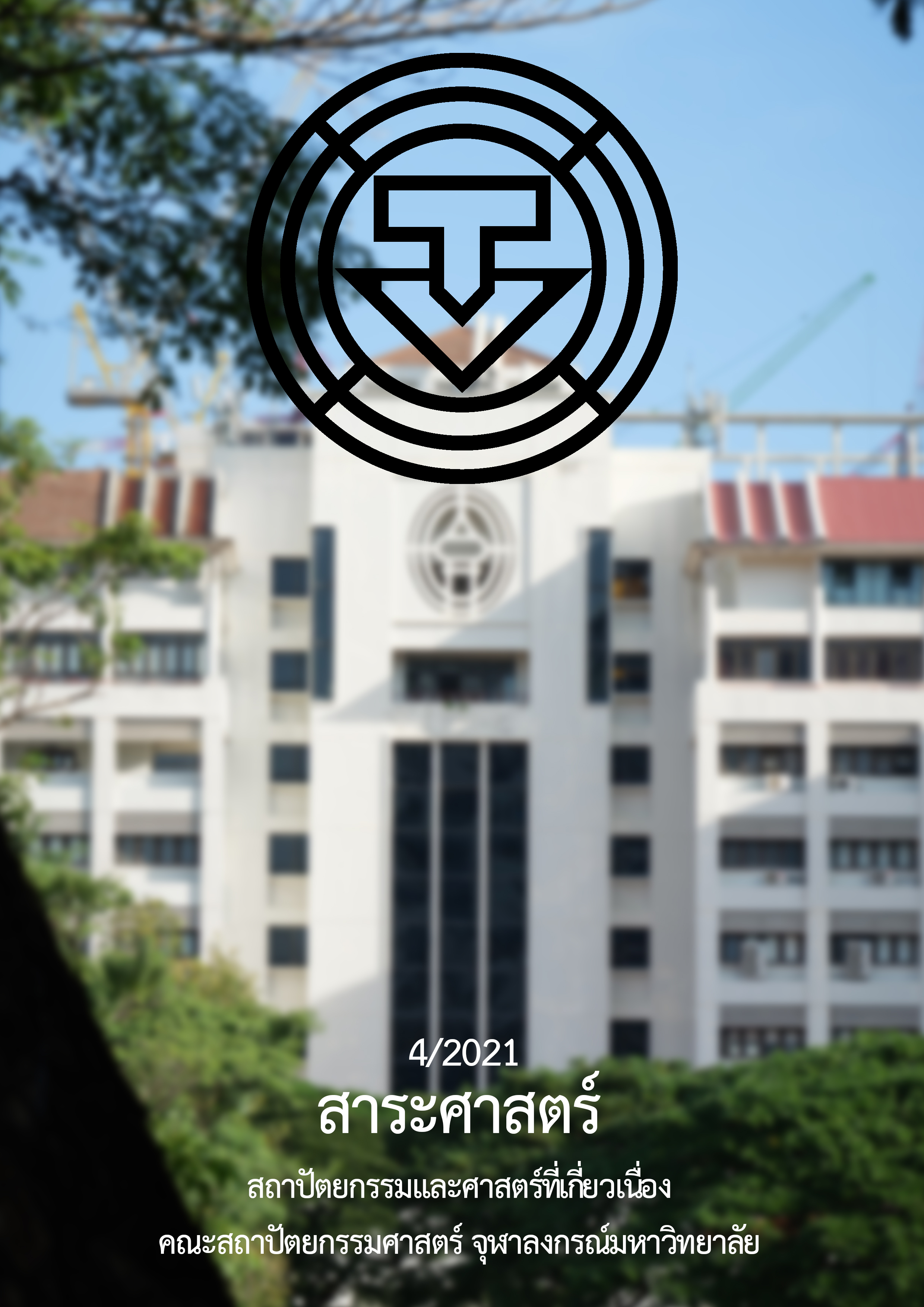The Study of Component in Cultural Landscape, Case Study: Wat Ketkaram Community, Mueang Chiang Mai District, Chiangmai Province.
Main Article Content
Abstract
This article is intended to identify and describe the significant cultural landscape components of Wat KetKaram community, located in Mueang Chiang Mai district, Chiang Mai province. This is a part of a study that assessed the value of the cultural landscape of Wat KetKaram community to conserve and develop components the community. The Important components of the cultural landscape was identified and studied. Data is analyzed to evaluate the community’s attributes area to find the value and importance of these cultural landscape components.
Wat KetKaram community, with 500 years history was settled on the Ping River. It is known as one of Chiang Mai's important and well preserved residential communities. Currently, the community has been going through changes to support the tourism. The changes have impacted on way of life, cultural traditions and the community’s economy, which are important components of the cultural landscape.
From field surveys of the community, physical attributes may be classified into four important component; physical, socio-cultural scenery, historical and economic components. A questionnaire interview was conducted. Respondents were also asked to give rating to twenty four representative pictures to indicate values and important of cultural landscape components. Respondents rating identifies pictures of areas with the highest value namely the banks of the Ping River, Charoen Rat Road, Wat Ketkaram and important religious places. Recommendations were made to pay particular attentions to the critical areas and social economic activities considered essential to the conservation of the cultural landscape.
Article Details
References
เกรียงไกร เกิดศิริ. (2551). ชุมชนกับภูมิทัศน์วัฒนธรรม. กรุงเทพฯ: อุษาคเนย์.
เกรียงไกร เกิดศิริ และ นันทวรรณ ม่วงใหญ่. (2559, มกราคม-ธันวาคม). การกำหนดคุณค่าตามเกณฑ์การพิจารณาแหล่งมรดกโลกในเอเชียตะวันออกเฉียงใต้ภาคพื้นทวีป (กลุ่ม CLMV): การสังเคราะห์ความรู้เพื่อเป็นแนวทาวสำหรับราชอาณาจักรไทย. วารสารหน้าจั่ว, 30, 43-60
ธนิต ชุมแสง. (2554). แนวทางการออกแบบสถาปัตยกรรม ย่านถนนเจริญราษฎร์. เชียงใหม่: สถาบันศึกษานโยบายสาธารณะมหาวิทยาลัยเชียงใหม่.
นวรัฐ โอศิริ. (2551). ภูมิทัศน์วัฒนธรรมเบื้องต้น. กรุงเทพมหานคร: ภาควิชาภูมิสถาปัตยกรรม จุฬาลงกรณ์มหาวิทยาลัย.
ปรานอม ตันสุขานันท์. (2559). การอนุรักษ์ชุมชนเมือง. กรุงเทพฯ: สำนักพิมพ์แห่งจุฬาลงกรณ์มหาวิทยาลัย.
มหาวิทยาลัยศิลปากร. (2550). แนวทางการจัดการภูมิทัศน์วัฒนธรรม. กรุงเทพฯ: บริษัท อมรินทร์พริ้นติ้งพับลิชชิ่ง จำกัด (มหาชน).
รุจิโรจน์ อนามบุตร และ วิลาสินี สุขสว่าง. (2555). คู่มือการประเมินผลกระทบทางสายตาจากสิ่งก่อสร้างประเภทอาคาร Visual impact assessment manual. กรุงเทพฯ: สำนักนโยบายและแผนทรัพยากรธรรมชาติและสิ่งแวดล้อม.
สำนักงานคณะกรรมการวัฒนธรรมแห่งชาติ กระทรวงวัฒนธรรม และ คณะสถาปัตยกรรมศาสตร์ มหาวิทยาลัยศิลปากร. (2550).
แนวทางการจัดการภูมิทัศน์วัฒนธรรม. กรุงเทพฯ: คณะสถาปัตยกรรมศาสตร์ มหาวิทยาลัยศิลปากร.
Australia ICOMOS. (2013). Burra Charter & practice notes. Retrieved 2019, July 15, from https://australia.icomos.org/publications/burra-charter-practice-notes/
De Blij, H. (1997). Human geography: Culture, society and space. New York: John Wiley & Sons.
Fowler, P. (2002). World heritage cultural landscapes,1992-2002. Paris: UNESCO World Heritage Centre.
The Heritage Council of Victoria. (2009). Landscape assessment guidelines for cultural heritage significance. Victiria: Heritage Council of Victoria.
Lennon, J. &. (1996). Cultural landscape management. Canberra: Australian Alps Liaison Committee.
Sauer, C. (1967). Land and life: A selection of the writing of Carl Ortwin Sauer. Berkeley: University of California Press.
Zube, E. H. (1987). Perceived land use patterns and landscape values. Landscape Ecology, 1, 37-45.


